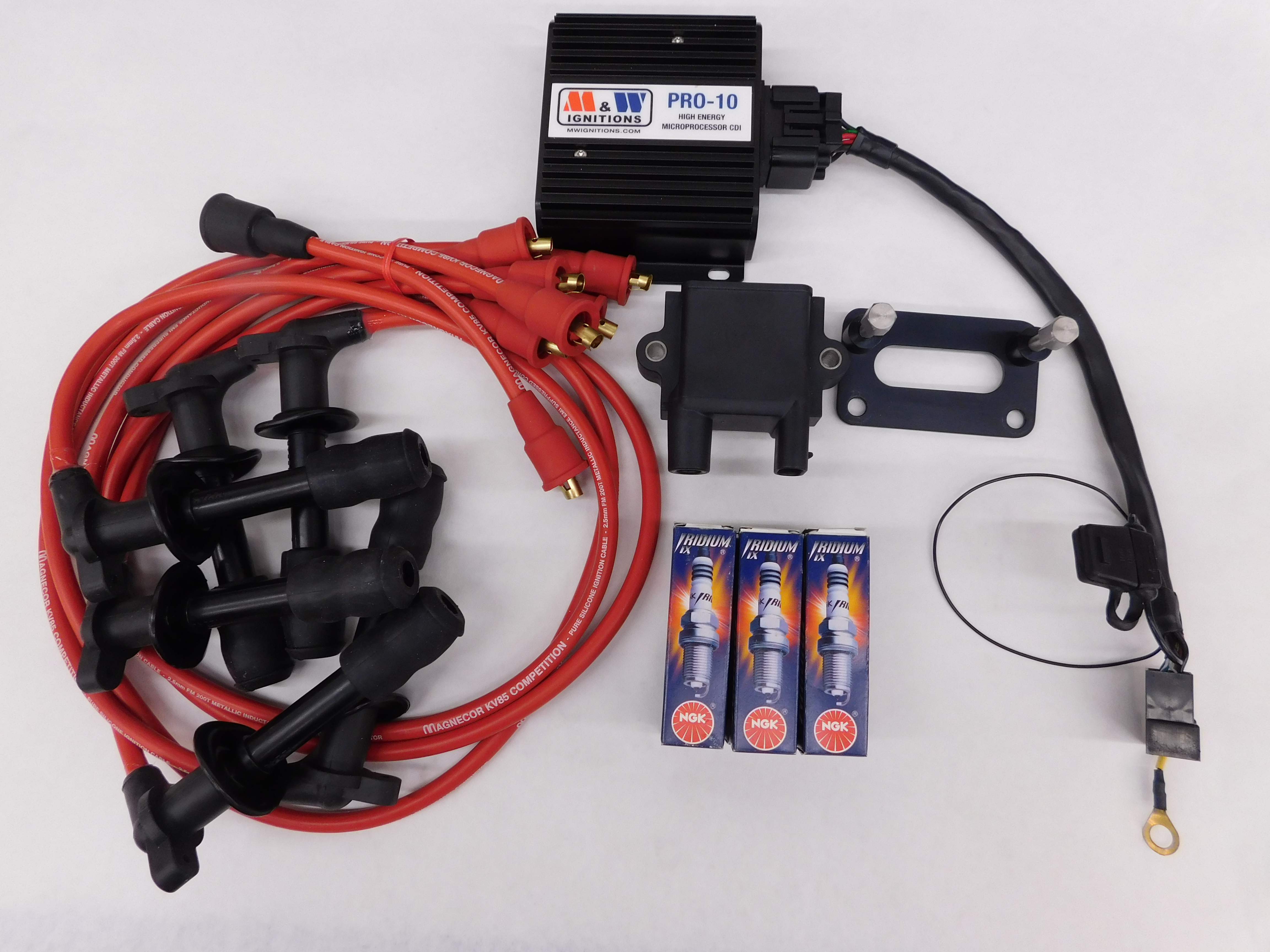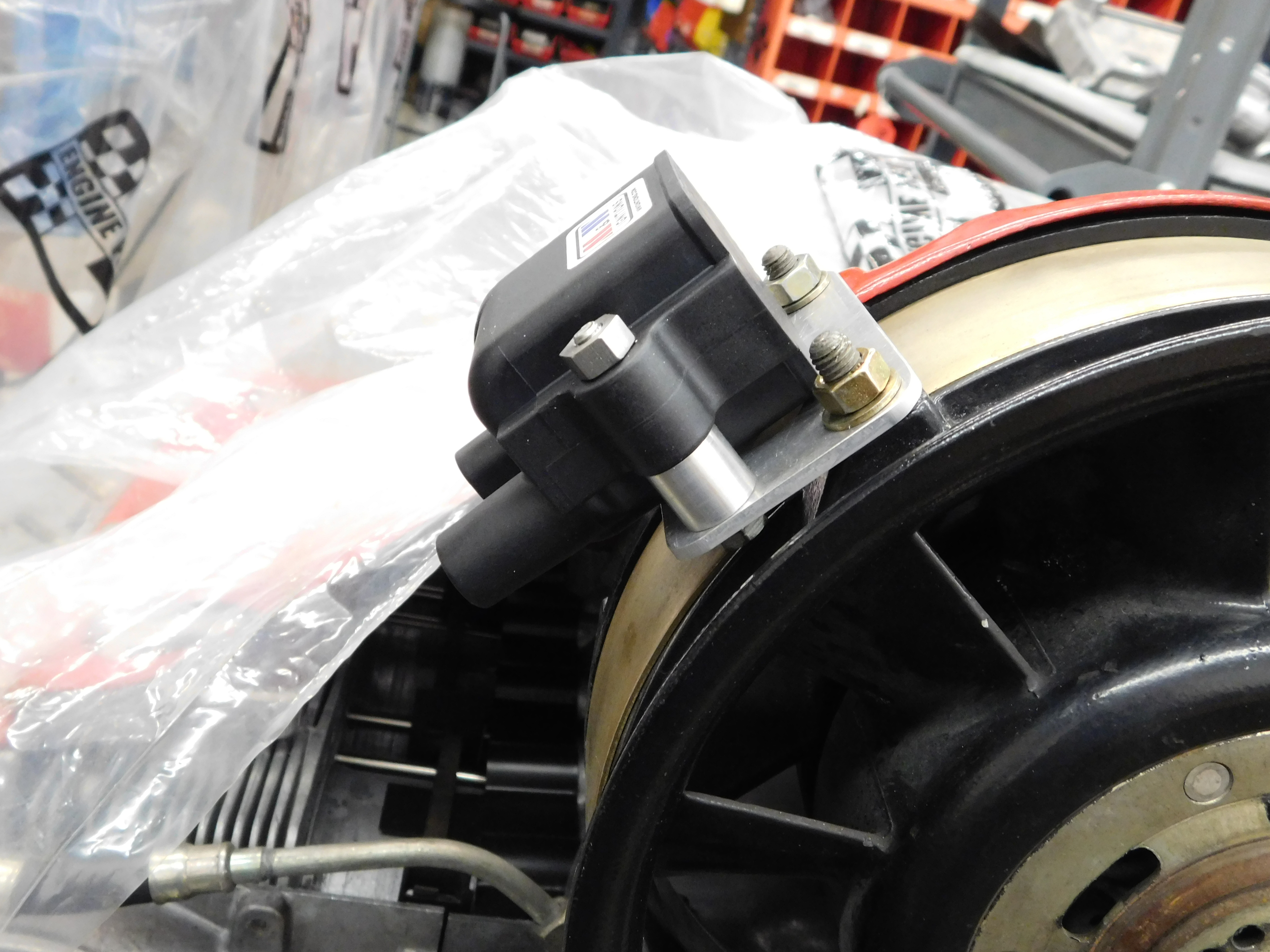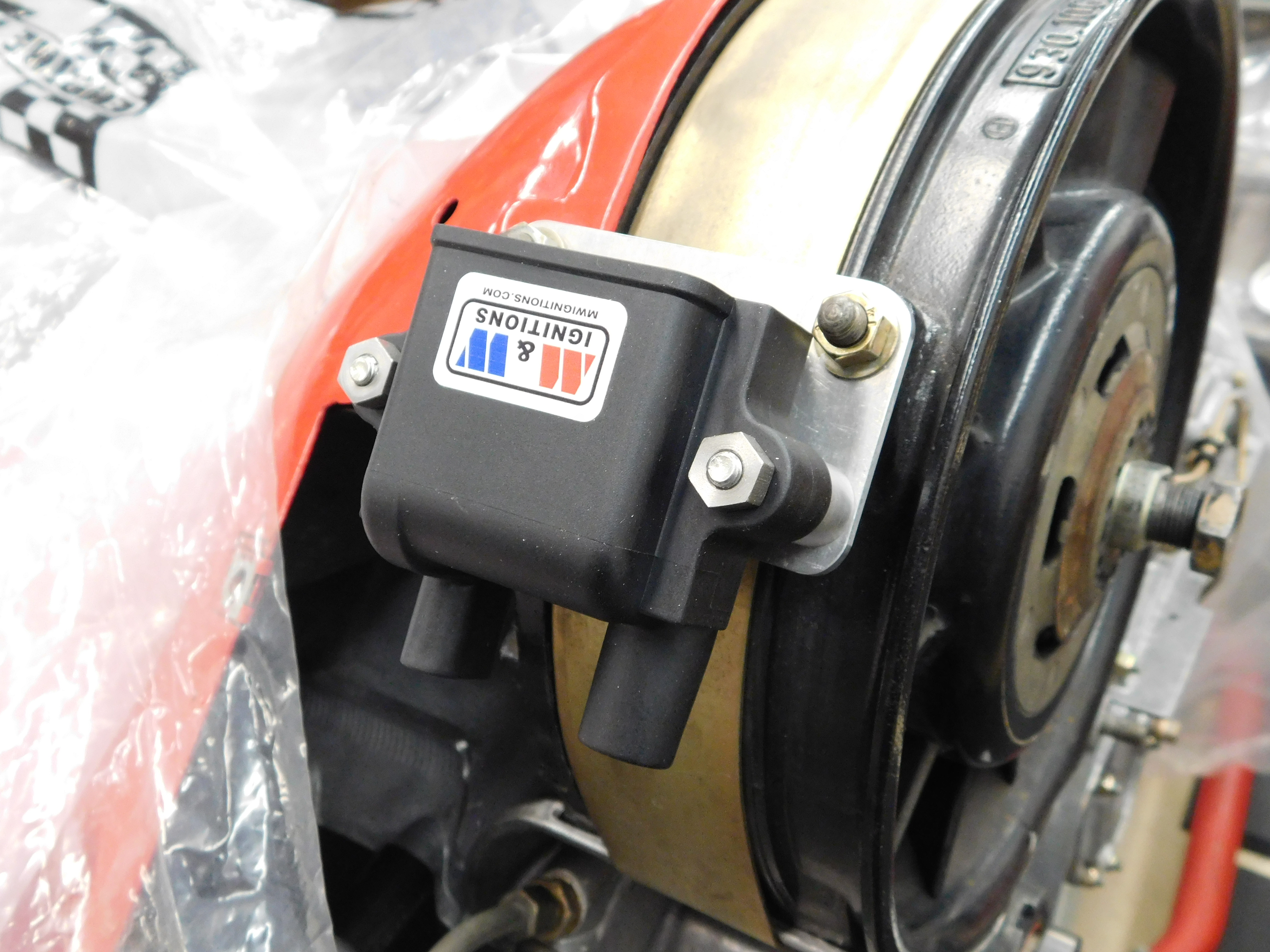Replacement CDI Ignition for Porsche 911 Carrera and Turbo Engines
Ignition performance is the most important component of an engines performance. It is the last function that happens before power is produced. Powerful and reliable ignition is critical in making your engine perform at its best.
A little history. Porsche 911 and 911 turbo engines produced during the late 70’s and through to the late 80’s all had Bosch CDI ignition. In the early 90’s the requirements to meet higher fuel mileage required the ignition systems to change over to Inductive as the later engines were run a lot leaner and inductive ignition is better at these leaner fuel conditions. The longer duration spark meant that all of the mixture was burnt resulting in lower emissions. However, there was a time where the hemi combustion chambers were still used in Porsche engines with inductive Ignition. The larger combustion chambers and long flame travel required these engines to have dual spark plugs fitted to shorten the burn travel. Inductive ignition is not the best choice on large hemi chambers and works better on modern smaller volume pent roof style chambers.
Performance Developments believes that the more Ignition power you can generate within the combustion chamber, producing a higher level of temperature, will always result in the highest level of engine torque. We have proven this over and over on these engines. Engines that have very large hemispherical combustion chambers and operate at the lower end of compression ratios have shown huge gains in engine performance. The response is dramatic, especially when compared to the stock and aftermarket Inductive or older CDI systems. The Porsche 911 based engines will idle smoother, have a lot better throttle response and will have a little more performance. How much extra performance? That will always depend upon the state of the engine.
Today, many will install coil on plug (COP) ignition coils with the idea that it will produce more performance. It may if the system you are replacing is poor. But, COP inductive coils will never out perform a good CDI ignition, even one that still uses the distributor. We believe that any system works best if it’s kept simple and in good condition. A 911 based engine with CDI, a distributor and plug wires is the better system. Multi coil setups complicate the system and will never outperform a CDI with the stock distributor.
What are the advantages of CDI? Other than producing a “hotter” spark, over time a CDI ignition will overcome many of the issues an ignition system must overcome due to plug fouling, carbon build up, plug wear, plug wire deterioration, etc. A CDI system stores the energy created in the system during the “off time” in a capacitor, then sends approximately 250 volts through a low resistance coil that steps up the volts to over 100:1 times the initial voltage. The spark generated is very accurate and quite short in duration. About 10 – 12 micro secs. This higher voltage creates a higher in chamber temperature which is the element that ignites the fuel mixture.
Why does it make more torque? Simple. The spark timing can be later or closer to TDC on the combustion stroke, thus generating more dynamic compression before the ignition point occurs. The CDI system produces higher energy levels which generate higher in cylinder temperatures, faster burn rates over less crankshaft degrees, producing higher in cylinder pressures upon the piston faces, turning chemical energy into kinetic energy at the crankshaft.
The faster burn rate condition happens as the pistons go over TDC and descends on its power stroke. As the piston travels to BDC, the cylinder pressure drops. This drop in pressure then has less effect on the crankshaft, so the faster the burn rate verses piston position in the cylinder will always make more torque.
Another factor that is extremely important and more so with air cooled engines is the temperature of the Intake system and cylinders. These engines are cooled by air and the misdistribution of cooling air over the 6 cylinders is quite high. This causes the cylinders to become out of round, increase friction and add to the inconsistencies of each in cylinder pressure value in every cylinder. With global ignition timing, the same for every cylinder at every ignition point, the differences in power generated in each cylinder can be very different every engine cycle. This difference is more so with inductive ignition with lower energy levels, but not as much with the greater energy released over a shorter crank angle with CDI.
With an increase in energy comes with some draw backs. Spark plug life will be shorter. You will see some degradation on the center electrode and ground straps. A nice advantage of CDI ignition is it will fire fouled plugs where inductive ignition will not even attempt to fire.
In an inductive system, as the cylinder pressure drops, the burn is still happening and the longer duration gives a more complete burn, lowering emission levels. Although this results in a better overall emission output, it has no effect on performance. Inductive Ignitions are controlled by their “on” time or “dwell” time and help to burn leaner mixtures required in today’s emission and mileage controlled cars. The energy created in an Inductive system is produced only by the size and construction of the coil. Once the Coil is fully charged it has to discharge or release this energy immediately, otherwise overheating of the Ignition driver and or the coil can happen resulting in component failure. A CDI system can continue to produce energy and store it in its capacitor until the required ignition point is reached. Within the electronic design of CDI circuitry, 12 volts of battery voltage is increased multiple times to well over 450 volts. Coils in CDI systems act as transformers and do nothing but step up the voltage. In an Inductive system, the condition of the battery is critical, thus the battery voltage affects the output level of the system.
Choosing a good Ignition system is very important. This is why Performance Developments is proud to be associated with M&W Ignitions. We have been a user and supplier of this great ignition system for over 20 years. We believe any engine is only as good as the sum of its parts. Remember, the Ignition system is the most important part of any engine. It is the last function to happen before the engine makes power.
The Pro 10R and Pro 10E single channel systems are perfect for the older Porsche engines that incorporate a distributor with either triggers. These two systems can generate 115mJ of energy and up to 150mJ of energy when the high power switch is activated. Each unit comes with this option, however, this is for short time use (push to pass) and not for continuous use. Multi spark feature is also available on the Pro10 unit.
The complete kit comes ready to install with CDI unit, isolation mounts, a short adapter harness to factory wiring, CDI Coil, a new Coil mounting bracket, Plug and Coil wire(s) and a new set of Spark plugs.
Pro 10 E. All engines with Points triggered Ignitions. Most early 911 engines.
Pro 10 R. All engines with reluctor triggered ignitions. Later 911 Carrera and Turbo engines.
To determine which Ignition you have, remove the distributor cap and look if your ignition is switched via breaker points or a reluctor star shaped wheel.
In dual plug engines, use two separate Pro 10 systems each driving the upper and lower spark plugs. Both CDI’s can be wired so they each receive the same trigger signal and the same +12V inputs. Running 1 system to drive all 12 spark plugs will half the energy output of the system.
Where possible try to use non resistor plugs as these restrict the out level. Unfortunately these plugs are becoming harder to find today. The kit we supply includes either type depending upon your plug size.
After installing the system, always check your ignition timing and adjust if required. This system may allow you to retard the timing a little and still have the same or better performance. Also check your AFR numbers to ensure you are still running safe. The spark plugs supplied in the kit are a colder heat range than standard and should always be fitted first.
Seek professional advice before and after installation if you are unsure about your engines running condition.
For further information and support, call Performance Developments, 949 646 7461. These systems will be available at the end of June 2017, as we are waiting for production on a large batch of CDI’s. We are now accepting pre-orders.


